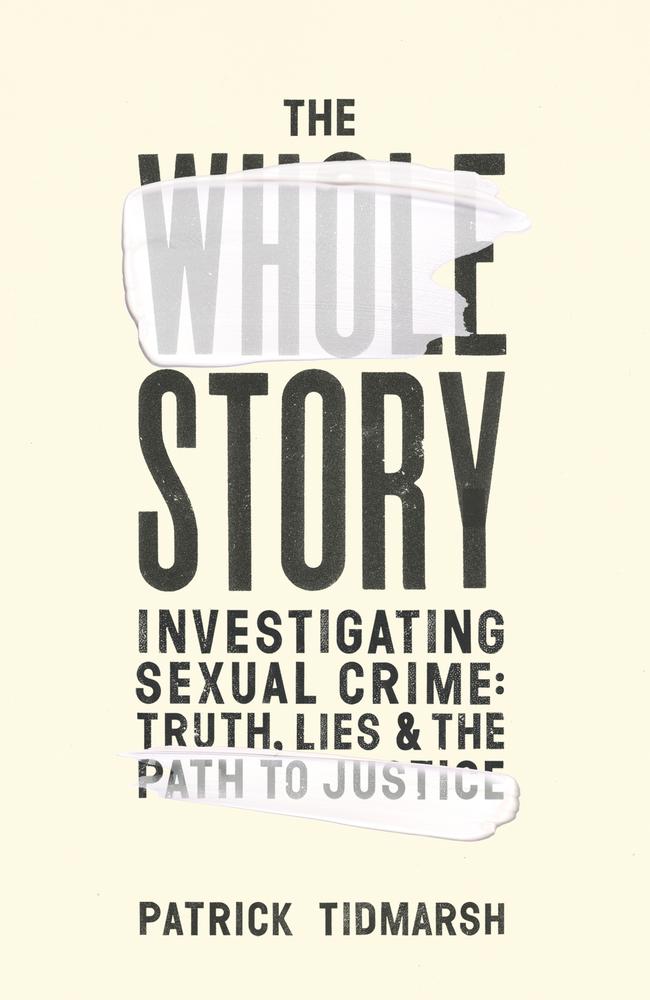Sex offenders share chilling traits and are most likely to offend at certain ages, says criminologist
Sex offenders usually share five characteristics, a leading criminologist says. See the full list and the times they are most likely to offend.

True Crime
Don't miss out on the headlines from True Crime. Followed categories will be added to My News.
A leading criminologist who spent 30 years working with thousands of sex offenders has revealed the five common traits almost all perpetrators share – and they’re not what you think.
Criminologist Patrick Tidmarsh has personally managed prison treatment programs for the full gamut of sex offenders – from serial rapists to pedophiles, child molesters to juvenile sex offenders – and believes sex crimes are the most urgently misunderstood subjects of our times.
He believes that if we want to stop sex crimes from occurring, we need to debunk the stereotypes and cut through the stigma.
Like the idea that sex offenders are easily identified as the elderly gentleman in a coffee-stained trench coat, pockets overstuffed with lollipops.
Instead, what Dr Tidmarsh has identified from his encounters with thousands of perpetrators is that they tend to have five dominant characteristics. These attributes were first identified by New Zealand researchers Tony Ward and Thomas Keenan.
1. Problems navigating the adult world
“They find the adult world a difficult place to navigate. So love, friendship, connection, intimacy, all those things they find extremely difficult,” Dr Tidmarsh said.
2. Refusal to accept blame
“They tend to blame anything but themselves for what they do. It’s called ‘uncontrollability’ in things, so [using justifications such as] ‘it wasn’t me. I was drinking alcohol. I was using pornography’ etc,” Dr Tidmarsh said.

3. A sense of entitlement
“I think we’ve all learnt a lot about entitlement in the last few years. So they feel they should be able to do whatever they want to do to make themselves feel better,” Dr Tidmarsh said.
4. Objectification of women or children as sexual objects
“They can perceive children to be sexual objects,” Dr Tidmarsh said.
5. Damage minimisation
“They are particularly good at minimising the nature of the damage that they do,” Dr Tidmarsh said.

“So you put those together, that’s when you get the set that makes that person much more likely to commit a sexual offence than someone who does not hold those views or does not see the world in that way,” Dr Tidmarsh explained.
He reveals there are four main ages or stages of life when a male sex offender is likely to start offending. “If you look at the lives of boys and young men, there are four key points: puberty, late adolescence, middle age and end of working life where men seem to start offending,” he said.
Originally from England, Dr Tidmarsh began his criminology work in Australia in the early 1990s, when treatment and specialised management of sex offenders was in its infancy. Initially he worked in prisons and community settings before joining Victoria Police, where he has dedicated the last 14 years to helping detectives better investigate sexual crimes.

“As I moved into policing you could see how much policing needed to change, and the courts needed to change in order to understand sex offending and essentially listen to victims better, and to provide a better system – a better process of justice for victims … I couldn’t look away,” he said.
His efforts have earned him a Victoria Police Medal for Merit however he believes his work, and the agency we need as a nation to better understand and minimise sex offences, is far from complete.
“We still don’t understand sex offending. We don’t understand who’s doing it, what they’re doing, how they’re doing it and the impact that that has. And it doesn’t join up with the way we investigate and prosecute these crimes,” he said.

Dr Tidmarsh acknowledged the damaging effect of bias on the way sexual crimes are treated within the justice system. For example, when a jury, first responding officer or even a friend or family member first listens to a victim’s story, they will ultimately do so through their own unconscious biases:
“What we tend to do is when we start listening to a story, we begin by listening to it in our own frame of what we think we would have done, or what our friends would have done, or all the things that we’ve been taught about sexual relationships.
“But then if we’re taken into the story, and we begin to see it from that person’s perspective, then we’re much more likely to see his version of events, and her version of events, and compare and contrast and decide what then really took place between those people,” he said.
It’s an approach Dr Tidmarsh refers to as the ‘whole story’.
His book, by the same name, The Whole Story: Investigating Sexual Crime – Truth, Lies and the Path to Justice by Patrick Tidmarsh, is available now, $35.
Originally published as Sex offenders share chilling traits and are most likely to offend at certain ages, says criminologist




